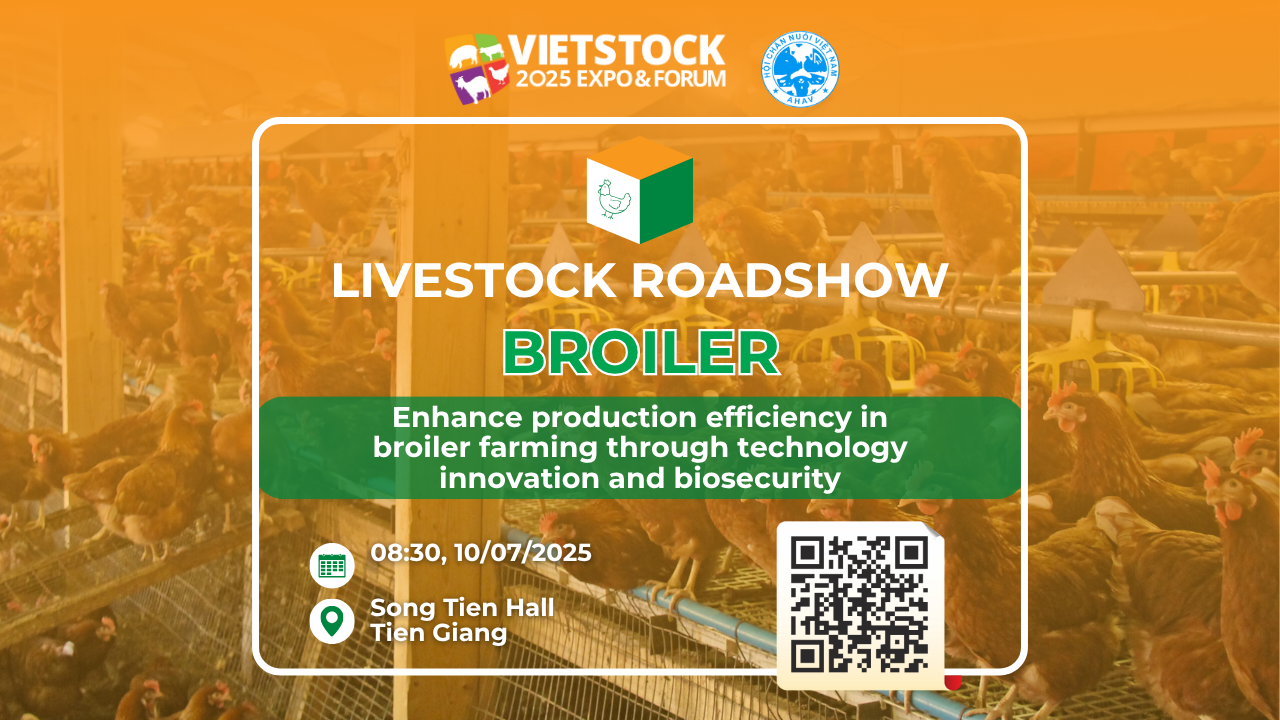PROMINENT TRENDS IN THE CATTLE AND BUFFALO FARMING INDUSTRY IN 2024
The cattle industry is the foundation of Vietnam’s agricultural economy, contributing to strengthening food security, catalyzing job creation, and promoting socio-economic progress. This industry is on the cusp of a new development in 2024, heralded by emerging trends poised to deliver lucrative returns for livestock farmers.
This article predicts prominent trends in buffalo and cattle farming in 2024, providing farmers with strategic insights to orient production, improve operational efficiency, and increase profits, capturing the wave of innovation and success in the field of cattle.
Overview of Vietnam’s cattle farming industry
The cattle industry plays an important role in Vietnamese agriculture, contributing to ensuring food security, creating jobs, and promoting socio-economic development in rural areas.
Scale and Livestock Composition: Vietnam currently maintains a combined herd of approximately 8.6 million cattle, comprising roughly 6.4 million cows and 2.2 million buffalo. The cattle and buffalo industry serves as a critical source of raw materials for food processing, leather production, pharmaceuticals, and even footwear.
Potential and Favorable Conditions: Vietnam’s climate and soil conditions are conducive to cattle and buffalo farming. The country boasts extensive grasslands, grazing areas, and abundant food sources, including agricultural by-products. Beyond subsistence, this industry contributes significantly to the national economy through meat production and leather exports.
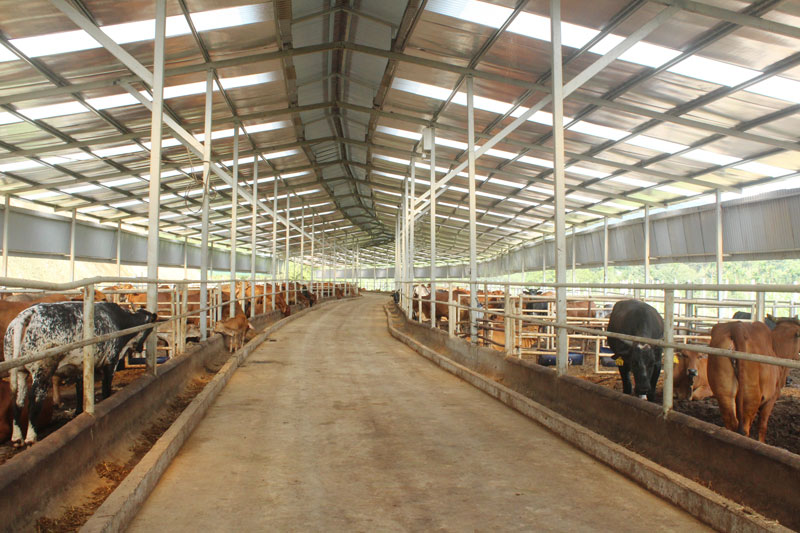
Despite its potential, Vietnam’s buffalo and bovine farming industry faces several challenges:
- Productivity and product quality are still low: The average productivity of buffalo meat remains sub-optimal. Uniformity in meat quality remains an issue.
- Diseases: Pasteurella, foot-and-mouth disease, and helminth infections frequently occur, affecting livestock health and causing economic losses for farmers.
- Youth Labor Scarcity: The availability of young labor for cattle and buffalo farming is increasingly scarce, resulting in a shortage of human resources for livestock-related activities.
- Infrastructure Gaps: The system of cages, warehouses, processing and preservation facilities for products is still limited and does not meet the development requirements of industry.
Understanding and adapting to trends in the livestock industry is essential for achieving effective and sustainable development. In the context of a constantly changing landscape, farmers must regularly update their practices to match the appropriate production goals. This includes efforts to improve productivity, product quality and optimize economic efficiency.
Trend 1: Restructuring livestock herds towards increasing the proportion of beef cattle herds
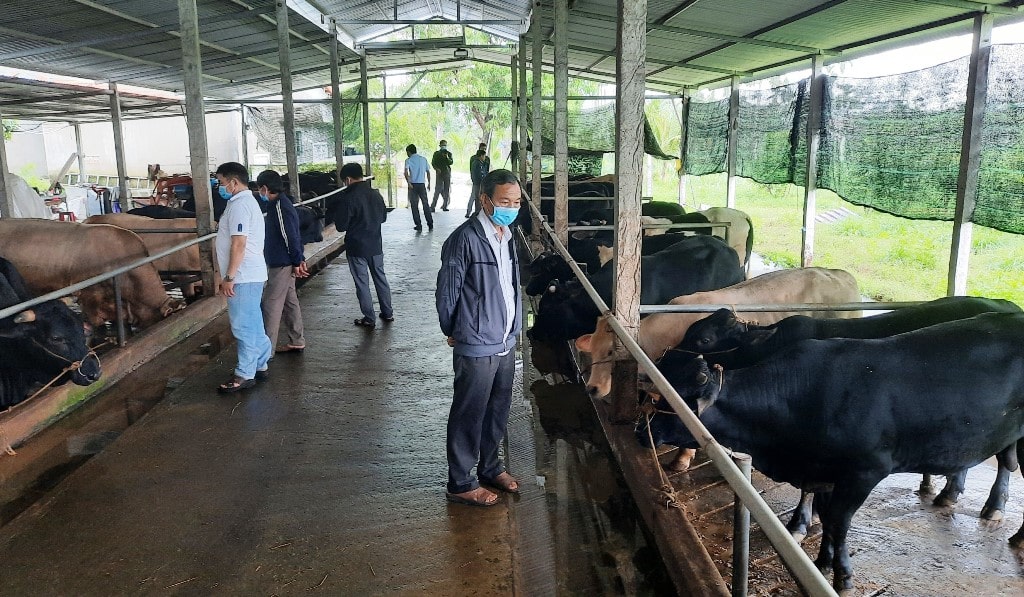
The increasing demand for beef consumption, especially in big city areas, is the driving force behind the trend of restructuring livestock herds towards increasing the proportion of beef cattle herds towards biosecurity, organic, protecting the ecological environment in the cattle farming industry by 2024. The main reason for this trend is driven by two factors:
- Consumer Preferences: Beef is popular because of its delicious taste, high nutritional value, and variety of cooking methods. The demand for buffalo meat is increasing due to people’s improved living standards and the increasing trend of consuming high-quality food.
- Financial Incentives: Beef prices are high, bringing attractive economic profits to farmers. The conversion to beef cattle farming promises higher profit potential than traditional buffalo farming.
Dual benefits for the livestock industry:
The restructuring of livestock herds brings many practical benefits to livestock husbandry:
- Enhanced Economic Returns: The rise in beef prices translates to greater earnings for ranchers, which boosts their income and elevates their standard of living.
- Satisfying Consumer Needs: The growing appetite for beef is being met efficiently, fostering market growth and the diversification of animal products.
- Resource Optimization: Transitioning to beef cattle farming allows for the more efficient utilization of feed, shelter, and manpower, thereby enhancing productivity and the efficiency of resource management.
Shifting the structure of livestock herds towards increasing the proportion of beef cattle herds is an inevitable trend in the context of an increasingly expanding beef consumption market and increasing consumer demand.
Farmers who grasp and implement this trend adeptly will see an uptick in profits, heightened economic performance, and will play a pivotal role in the enduring progress of the cattle farming trade.
Trend 2: Utilizing scientific and technological advancements in livestock production
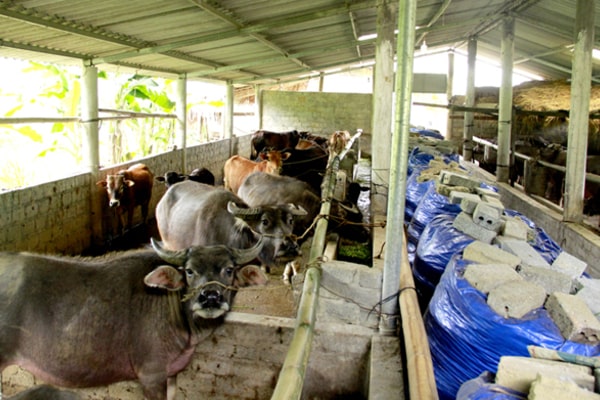
In 2024, Vietnam’s cattle farming industry is on the rise with a strong trend of applying science and technology to improve production. This is the key to improving productivity, meat quality and economic efficiency, bringing the livestock industry to new heights.
Diverse scientific and technical applications:
The cattle farming industry applies advanced science and technology, including:
- Artificial insemination: This method enhances reproductive efficiency, increases the proportion of healthy offspring carrying favorable genes, and contributes to overall livestock productivity.
- Embryo transplantation: By creating calves with superior genes from high-quality mother cows, this technique improves meat quality and enhances the economic value of the herd.
- Using artificial animal feed: Providing adequate nutrition, artificial animal feed promotes healthy livestock growth, increases meat yield, and helps reduce disease incidence.
- Livestock management software: Effective management software monitors health, reproductive history, vaccination records, and livestock costs. It contributes to improved management efficiency and risk mitigation.
To foster sustainable and effective development in Vietnam’s cattle farming industry, update knowledge, invest in technology, and apply these advanced techniques.
Trend 3: Creating sustainable and eco-friendly models for livestock farming.
Amidst growing environmental concerns and the escalating demand for safe food, the cattle and buffalo farming industry is embracing the trend of developing secure and eco-friendly livestock models in 2024. This approach is gaining traction due to several factors:
- Consumer Awareness: With a heightened awareness of food origins, quality, and safety, consumers are increasingly opting for products derived from secure and eco-friendly livestock models, safeguarding the health of their families and themselves.
- Market Demands: As export markets impose stricter food safety and environmental standards, adopting secure and eco-friendly livestock models has become essential for cattle and buffalo products to penetrate global markets.
- Environmental Stewardship: The livestock sector bears the responsibility of environmental conservation and the sustainable use of natural resources. By fostering secure and eco-friendly livestock models, the industry aids in preserving water, land, and air, thus ensuring public health and sustainable progress.
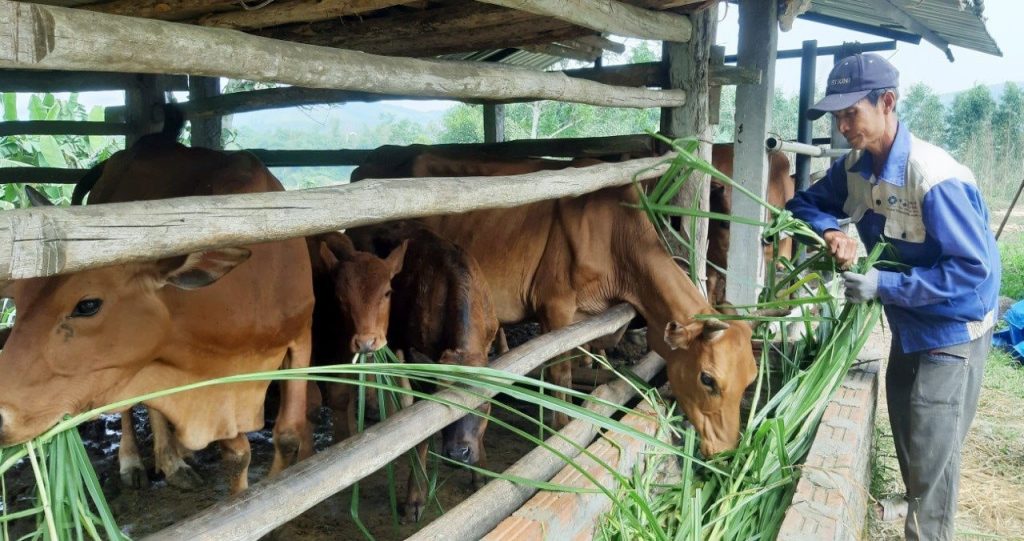
Models of Secure and Eco-Friendly livestock farming:
The cattle farming industry is implementing a variety of secure and eco-friendly farming models, such as:
- Organic livestock farming: Emphasizing the use of organic feed and abstaining from chemicals and antibiotics to guarantee the safety of animal health and livestock products.
- Biological livestock farming: Applying biological disease control measures, limiting the use of antibiotics, ensuring safety for the environment and human health Employing biological disease control methods and minimizing antibiotic use to protect both environmental and human health.
- VietGAP-Compliant Livestock Rearing: Adhering to food safety standards, judicious use of pesticides and chemicals, and environmental conservation.
- Integrated Livestock and Crop Farming: Capitalizing on agricultural by-products for animal feed, thereby fostering a sustainable and eco-friendly livestock ecosystem.
Trend 4: Expanding the consumption market for beef and buffalo meat products
Vietnam’s cattle farming industry is facing a huge opportunity as both the domestic and international beef & buffalo meat consumption markets expand.
- Domestic market: Domestic demand for beef & buffalo meat is on the rise due to improved living standards and a growing preference for high-quality food.
- International market: The export market for beef & buffalo meat to countries such as China, Japan, Korea, and the EU holds great potential, driven by high consumption demand and attractive prices.
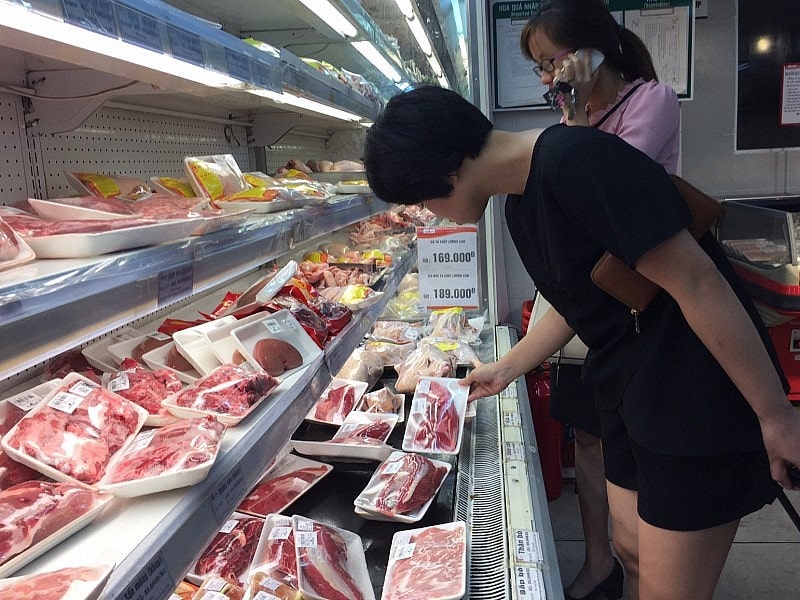
Despite this potential, the cattle industry encounters several challenges in expanding product consumption markets:
- Quality Variability: The uneven quality of buffalo and beef meat affects competitiveness in the market.
- Processing Technology Limitations: Current beef and buffalo meat processing technology does not meet diverse market demands.
- Distribution Channel Gaps: Insufficiently developed distribution channels hinder product reach.
- Under-promotion: Limited promotion efforts result in consumers not fully understanding the value and benefits of buffalo meat products.
Solutions for Market Expansion:
To overcome these challenges and expand the consumption market for beef & buffalo meat products, consider implementing the following effective solutions:
- Promotion: Increase promotion through media channels, fairs, and exhibitions to raise consumer awareness of the product’s value.
- Quality improvement: Implement quality control measures across breeding, slaughtering, processing, and preservation to ensure safe, hygienic, and high-quality products.
- Product diversification: Explore various beef and buffalo meat products (e.g., sausages, jerky) to cater to diverse market needs.
- Distribution network development: Expand distribution channels to include supermarkets, food stores, and traditional markets for better product accessibility.
- Trade Agreements: Participate in international trade agreements to facilitate beef & buffalo meat exports to potential markets.
Key importance:
Expanding the consumption market for cattle meat products:
- Increased income: As the consumer market expands and product prices rise, farmers will experience higher income levels, leading to improved livelihoods.
- Stimulated production: Robust market demand acts as a catalyst for farmers to expand their herds and scale up production, thereby contributing to the overall growth of the livestock industry.
- Job creation: The expansion of the market creates numerous employment opportunities in livestock farming, processing, and distribution, fostering socio-economic development.
Conclude
Embracing new is the key to success in any field, and the cattle industry is no exception. The year 2024 brings a wealth of changes and opportunities for those ready to adapt and innovate.
To stay informed about the latest developments in cattle farming, let’s join VIETSTOCK – Vietnam’s Premier International Feed, Livestock, Aquaculture & Meat Industry Show. Co-located with Aquaculture Vietnam 2024 will be the unique one-stop business platform for professionals in Vietnam & region, who are involved in the farm-to-fork value chain for feed, livestock, meet & aquaculture products to meet up, create new business opportunities, and innovations . How to register:
- Visit the official website of Vietstock 2024: https://www.vietstock.org/en/
- Click the “Online- Registration” button on the menu bar.
- Fill out all the information in the online registration form.
- Confirm registration and wait for email notification from the organizers.
CONTACT US:
- Exhibiting: Ms. Sophie Nguyen – Sophie.Nguyen@informa.com
- Group Delegation Support: Ms. Phuong – phuong.c@informa.com
- Marcom Support: Ms. Anita Pham – anita.pham@informa.com




